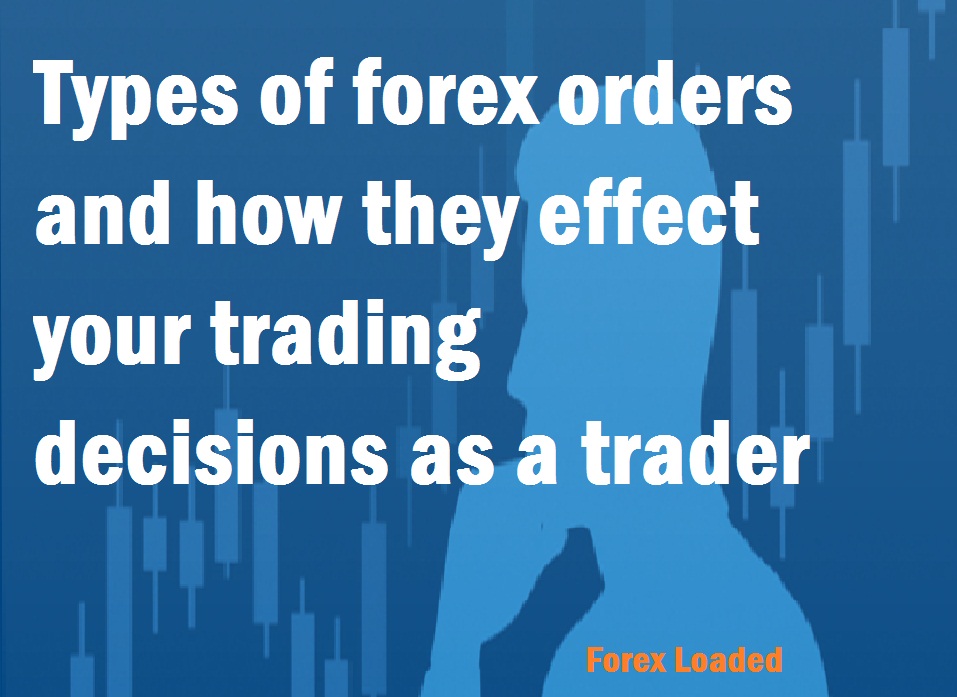Mastering Forex Order Types: A Beginner’s Guide to Smarter Trading Decisions.
Welcome to today’s lesson! In this session, we’ll be diving deep into the various types of forex orders and how they can influence your trading decisions, especially if you’re starting your journey as a beginner trader.
One of the most crucial elements of building a successful forex trading career is understanding the different types of orders available in the market. These order types can either work in your favor or against you, depending on how and when you use them. Learning how to place orders is foundational to developing a disciplined and sustainable trading lifestyle.
Each forex order type serves a unique purpose. Knowing when and how to use them will largely determine how skilled and profitable you become. As we always say, your position in the market determines whether you’re adding to liquidity or taking from it.
As we learned in the previous lesson, an order is essentially an instruction to your broker to either enter or exit a trade on your behalf. When used correctly, these various order types can significantly boost your efficiency and profitability in the market.
Now, let’s break down each order type along with their advantages and disadvantages:
1. Market Order
A Market Order is used to execute a trade instantly at the current available price. It is ideal for traders who have been patiently watching the market and are ready to enter as soon as the price hits their desired level.
Example: If you’re monitoring GBP/USD and want to buy when it hits 1.0003, you execute a market order once it reaches that level. However, due to spreads, your fill price may vary slightly.
Advantages:
- Fast execution at the current price.
- It prevents missed trading opportunities.
- Ideal for quick market entries.
Disadvantages:
- In highly volatile markets, slippage can lead to worse-than-expected prices.
- Early entries may occur without the price reaching your exact target due to impatience.
2. Buy/Sell Stop Order
A Buy Stop is set above the current market price, while a Sell Stop is set below the current price. These are pending orders used to capture momentum-based entries without chasing price.
Advantages:
- Enables precise entry decisions without chasing the market.
- It is ideal for traders who struggle with patience.
- Promotes discipline and structure.
Disadvantages:
- If the price never reaches your stop level, you miss the trade.
- Susceptible to slippage during volatile conditions.
Quick Note:
Price Slippage occurs when a trade executes at a different price than expected due to rapid market movement, sometimes worse, sometimes better.
3. Buy/Sell Limit Order
A Buy Limit is set below the current market price, while a Sell Limit is set above the current price. These pending orders are perfect for those targeting pullbacks or retracements.
Advantages:
- Great for trading market retracements and pullbacks.
- Reduces emotional decision-making.
- It lowers slippage potential due to strategic entries.
Disadvantages:
- You might miss out if the market doesn’t pull back to your target.
- It still has some slippage risk in fast-moving markets.
4. Stop Loss Order
A Stop Loss Order is your automatic safety net. It tells your broker to close a trade if it moves against you, protecting your capital and managing risk.
Advantages:
- It is essential for effective risk management.
- It protects your capital from extreme volatility.
- Highly recommended for beginners.
Disadvantage:
- Poor placement may result in being stopped out prematurely just before the market moves in your favor.
5. Trailing Stop Order
A Trailing Stop Order adjusts itself as the market moves in your favor. It’s designed to lock in profits while still allowing room for further gains.
Advantages:
- Secures profits during favorable price movement.
- Minimizes emotional trading, which can hurt your results.
Disadvantages:
- It may trigger too early, cutting short a winning trade.
- It requires careful configuration and is less suitable for beginners.
6. Good Till Cancelled (GTC) Order
A Good Till Cancelled (GTC) Order keeps your pending order active until a specified expiration or until you cancel it manually. Most brokers default to this setting.
Advantages:
- It helps manage pending orders more efficiently.
- It is perfect for long-term traders targeting key levels over time.
Disadvantage:
- Without proper setup, it might cancel prematurely before the price reaches your desired level.
Final Thoughts
Mastering these order types is key to trading smarter, staying disciplined, and avoiding the costly habit of chasing price, which can seriously damage your trading career, especially as a beginner.
In our next lesson, we’ll be exploring Demo Trading, an essential step for every trader looking to build real-world experience without financial risk.
Keep learning, stay disciplined, and remain blessed on your trading journey!









